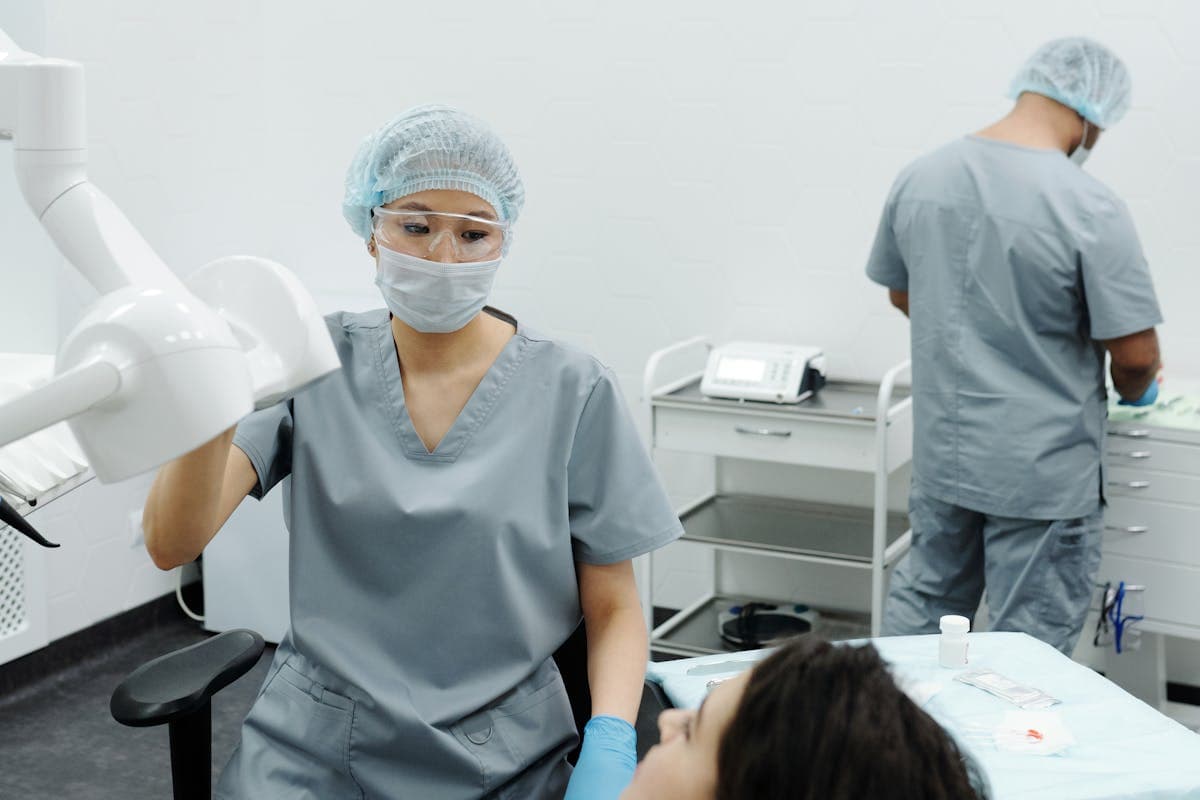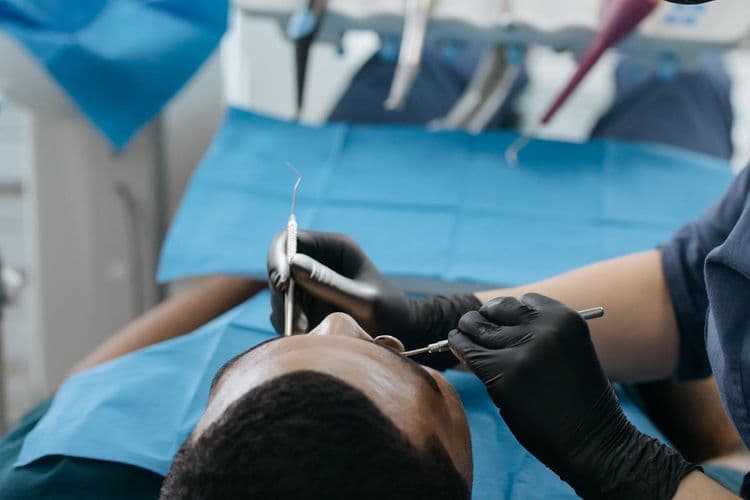As we explore the topic of TMJ consultation, it’s important to reflect on the significant role it plays in the diagnosis and management of TMJ disorders. A thorough assessment, comprising the review of medical history, physical examination, and possibly imaging tests, provides vital information to health professionals. But what precisely can one anticipate during this consultation process, and how can it affect the trajectory of their TMJ disorder treatment? The implications of these inquiries not only reveal the potential benefits but also the essential importance of early intervention. Let’s investigate deeper into this subject matter.
Understanding TMJ Disorder
A considerable number of individuals worldwide grapple with a complex condition known as Temporomandibular Joint Disorder, more commonly referred to as TMJ Disorder. This condition is primarily linked to the temporomandibular joint, an integral component of the human body that connects the jawbone to the skull, facilitating essential functions like speaking and eating. There are diverse causes of TMJ, with the most prevalent being jaw injury, arthritis, and clenching or grinding of teeth, often induced by stress. In many cases, TMJ triggers may also include excessive gum chewing, poor posture, and ill-fitting dental appliances. Understanding these triggers is vital as it informs preventive measures and treatment options, ultimately enhancing the quality of life for those who suffer from this disorder.
Symptoms Indicating TMJ Disorder
Recognizing the symptoms of TMJ Disorder is a fundamental step in seeking appropriate medical intervention. One of the most common symptoms is persistent jaw pain, often manifesting as a dull ache, but it can escalate to severe discomfort when opening the mouth or chewing. This pain may extend to the face, neck, or ears. Another indicative symptom is teeth grinding or bruxism, typically occurring during sleep, which can cause tooth wear and exacerbate jaw pain. Additionally, sufferers may experience difficulty or discomfort while chewing, a clicking or popping sound in the jaw joint, and even a change in the way the upper and lower teeth fit together. These symptoms can greatly impact a person’s quality of life and require prompt attention.
The Importance of a TMJ Consultation
Despite the considerable discomfort that TMJ disorders can cause, many individuals tend to overlook the significance of a TMJ consultation. This is often due to prevailing tmj myths that downplay the severity of the condition. However, extensive tmj research shows that without professional intervention, TMJ disorders can lead to chronic pain and long-term joint damage. A TMJ consultation provides a thorough analysis of the patient’s symptoms, leading to accurate diagnosis and effective treatment plans. This vital step not only alleviates immediate discomfort but also prevents the progression of the disorder. As a result, understanding the importance of a TMJ consultation is essential in managing this condition and ensuring the well-being of patients.
What to Expect During Consultation
Steering through the consultation process for TMJ can seem intimidating, but understanding what to expect can alleviate some of the uncertainty. The process includes a detailed breakdown of how TMJ is diagnosed, offering a clear view of the steps your healthcare provider will take. This part of our discussion will outline these aspects to provide an all-encompassing guide on what to anticipate during your TMJ consultation.
Consultation Process Breakdown
The initial consultation is a critical step in determining the correct treatment plan for Temporomandibular Joint Disorder (TMJ). During this process, the consultation duration and appointment preparation become integral aspects to guarantee a thorough evaluation. Proper preparation may include gathering medical history, noting down symptoms, and bringing any relevant medical documents. Expect the duration of this consultation to last approximately one hour, as a detailed examination is necessary to accurately assess the condition. This process is designed to gather as much information as possible to assist the specialist in formulating an effective treatment plan. Remember, this consultation is not merely an assessment but also an opportunity for the client to ask questions and gain a better understanding of their condition.
Understanding TMJ Diagnosis
A pivotal stage in the TMJ consultation process is the diagnosis. This involves detailed examinations to identify TMJ causes and assess TMJ risk. Professionals employ a variety of techniques to guarantee accurate diagnosis:
- Medical History Review: This includes a review of past health issues and lifestyle habits.
- Physical Examination: The doctor will check your jaw joints for pain or tenderness.
- Jaw Movement Tests: These measure the range of motion in your jaw.
- Imaging Tests: X-rays, CT scans or MRI may be used to provide detailed images of the jaw.
- TMJ Arthroscopy: In rare cases, a small thin tube (arthroscope) is inserted into the joint space to examine the area and determine the cause of the TMJ disorder.
Each step is essential in crafting a thorough treatment plan.
Diagnostic Methods for TMJ
Several diagnostic methods exist for Temporomandibular Joint Disorder (TMJ), each with its unique efficacy and scope. Imaging techniques are commonly employed in the diagnostic process. These may include Magnetic Resonance Imaging (MRI), Computed Tomography (CT) scans, or Cone Beam Computed Tomography (CBCT), which provide detailed images of the joint’s structure and function. A physical examination is another essential diagnostic method. This involves palpation of the joint, assessment of jaw movement, and evaluation of pain response. Other diagnostic methods may include patient history assessment and clinical tests like measuring jaw opening range. It is important to note that each method has its strengths and limitations, and often a combination of methods yields the most accurate diagnosis.

Treatment Options for TMJ Disorder
Following a thorough overview of TMJ disorder and its diagnostic methods, we turn our attention to the treatment options available for this condition. These include non-surgical treatments, which can often be the first line of defense in managing symptoms, as well as more invasive surgical intervention methods, reserved for severe or non-responsive cases. Each approach carries its own set of benefits and potential risks which we will examine in detail.
Understanding TMJ Disorder
While TMJ Disorder can be a complex and multifaceted condition, a variety of treatment options are available to alleviate symptoms and improve jaw functionality. Understanding the disorder fully is essential to effectively manage it. Here are some key points:
- TMJ disorder affects the temporomandibular joint, which connects your jaw to your skull.
- It can be caused by a range of factors, from genetics and arthritis to jaw injury.
- Common symptoms include pain in the jaw, difficulty chewing, and a clicking sound when moving the jaw.
- There are several misconceptions about TMJ disorder, including the myth that it’s caused solely by stress or that it’s not a serious condition.
- Proper diagnosis and treatment can greatly improve quality of life for those suffering from TMJ disorder.
Non-Surgical TMJ Treatments
Having gained an understanding of TMJ disorder, its causes, symptoms, and misconceptions, we can now explore the various non-surgical treatment options available. Physical therapy, an effective approach, includes exercises to strengthen jaw muscles, improve flexibility and promote healing. Another treatment, acupuncture, has shown significant benefits in relieving TMJ-related pain. It works by stimulating specific points on the body to correct imbalances in the flow of energy. Additionally, lifestyle changes such as stress management and dietary modifications can also contribute to the management of TMJ disorder. Dental interventions like oral splints or mouth guards, especially at night, may also be beneficial. Each treatment plan is tailored to the individual’s condition, symptoms, and response to therapy.
Surgical Intervention Methods
In cases where non-surgical methods prove ineffective in treating TMJ disorder, surgical intervention becomes a viable option. This involves a range of surgical techniques designed to alleviate the debilitating symptoms of this condition. The decision to proceed with surgery should be made after thorough consultation and evaluation.
Surgical intervention methods include:
- Arthrocentesis: A minimally invasive procedure involving small needle insertion into the joint.
- Arthroscopy: Utilizes an arthroscope to view, diagnose, and treat TMJ disorder.
- Open-joint surgery: For severe cases where the jaw joint needs more direct intervention.
- Total joint replacement: Replaces the affected joint with an artificial one.
- Orthognathic surgery: Corrects conditions of the jaws and face related to structure, growth, sleep apnea, or TMJ disorders.
Each surgical intervention has specific recovery protocols to aid healing and restore function.
Lifestyle Changes to Manage TMJ
To effectively manage Temporomandibular Joint Disorder (TMJ), adopting certain lifestyle changes can make a significant difference. Among these, stress management is paramount. High levels of stress can exacerbate TMJ symptoms, as it often leads to subconscious jaw clenching or grinding. Techniques such as yoga, meditation, or counselling can help in reducing stress levels, thereby alleviating TMJ discomfort.
Moreover, dietary adjustments play an essential role in managing TMJ. Consuming softer foods can help reduce the strain on the jaw joint and muscles. Additionally, limiting the intake of caffeine and alcohol, which can stimulate muscle tension and jaw clenching, is advised. These lifestyle changes, when implemented consistently, can greatly contribute to managing TMJ, complementing other treatment methods.
Maintaining TMJ Post-Treatment Care
After completing treatment for Temporomandibular Joint Disorder, it is essential to adhere to a robust post-treatment care regimen to secure long-term relief. This involves a combination of post treatment exercises and dietary modifications.
To maintain the results achieved through therapy, consider the following:
- Incorporate specific exercises into your daily routine to strengthen the jaw muscles and improve joint mobility.
- Modify your diet to include softer foods that require less jaw movement while chewing.
- Stay hydrated to promote proper functioning of the joint and surrounding muscles.
- Avoid activities that strain the jaw, such as clenching or grinding the teeth.
- Regularly consult with your healthcare provider to monitor progress and adjust post-treatment care when necessary.
These steps can help maintain the benefits of TMJ treatment, improving overall jaw function and reducing discomfort.
Frequently Asked Questions
Can TMJ Disorder Lead to Other Health Problems?
Yes, TMJ disorder can lead to other health problems including chronic headaches. The connection is often due to the strain from persistent jaw clenching, which can also affect neck and facial muscles.
Can Children and Teens Also Experience TMJ Disorder?
Yes, children and teens can also experience TMJ disorder. Child symptoms often include teeth grinding and jaw discomfort. Early detection and treatment can prevent potential complications in their physical and psychological health.
Does Health Insurance Typically Cover TMJ Consultation and Treatment Costs?
Coverage for TMJ disorder consultation and treatment options varies widely among health insurance providers. It’s essential to review your specific policy or consult with your insurance representative to understand the extent of your coverage.
Can TMJ Disorder Recur After Successful Treatment?
Yes, TMJ disorder can potentially recur after successful treatment. Recurrence factors may include stress, poor posture, or teeth grinding. Various treatment options are available to manage and alleviate recurring symptoms.
Are There Any Home Remedies Effective for TMJ Symptom Relief?
Yes, certain home remedies can alleviate TMJ symptoms. Jaw exercises, for instance, can enhance jaw joint flexibility and strength. Heat therapy, too, can soothe muscles, reducing discomfort and improving jaw function.


